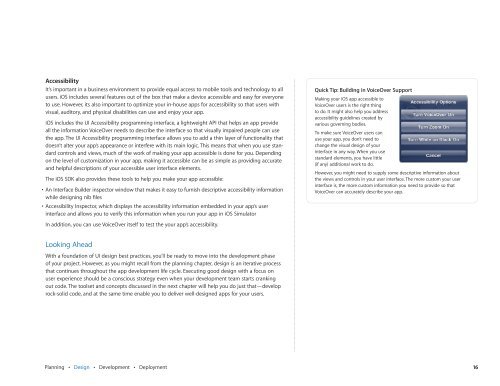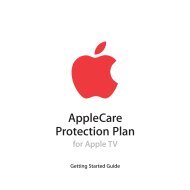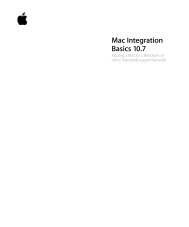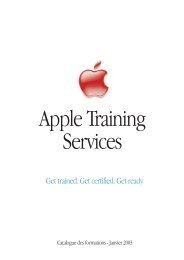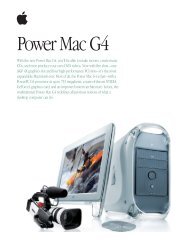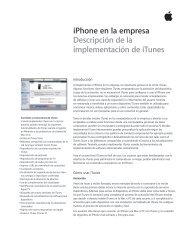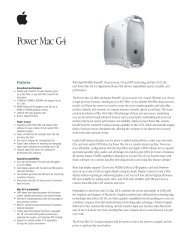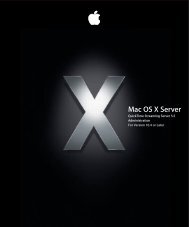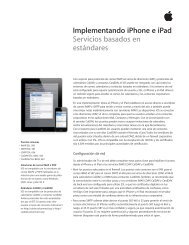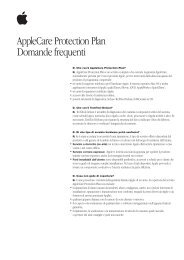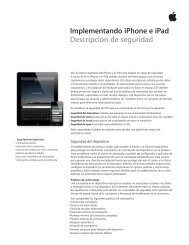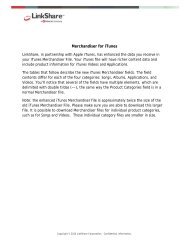In-House App Development Accelerator Guide - Apple
In-House App Development Accelerator Guide - Apple
In-House App Development Accelerator Guide - Apple
You also want an ePaper? Increase the reach of your titles
YUMPU automatically turns print PDFs into web optimized ePapers that Google loves.
Accessibility<br />
It’s important in a business environment to provide equal access to mobile tools and technology to all<br />
users. iOS includes several features out of the box that make a device accessible and easy for everyone<br />
to use. However, its also important to optimize your in-house apps for accessibility so that users with<br />
visual, auditory, and physical disabilities can use and enjoy your app.<br />
iOS includes the UI Accessibility programming interface, a lightweight API that helps an app provide<br />
all the information VoiceOver needs to describe the interface so that visually impaired people can use<br />
the app. The UI Accessibility programming interface allows you to add a thin layer of functionality that<br />
doesn’t alter your app’s appearance or interfere with its main logic. This means that when you use standard<br />
controls and views, much of the work of making your app accessible is done for you. Depending<br />
on the level of customization in your app, making it accessible can be as simple as providing accurate<br />
and helpful descriptions of your accessible user interface elements.<br />
The iOS SDK also provides these tools to help you make your app accessible:<br />
• An <strong>In</strong>terface Builder inspector window that makes it easy to furnish descriptive accessibility information<br />
while designing nib fi les<br />
• Accessibility <strong>In</strong>spector, which displays the accessibility information embedded in your app’s user<br />
interface and allows you to verify this information when you run your app in iOS Simulator<br />
<strong>In</strong> addition, you can use VoiceOver itself to test the your app’s accessibility.<br />
Looking Ahead<br />
With a foundation of UI design best practices, you’ll be ready to move into the development phase<br />
of your project. However, as you might recall from the planning chapter, design is an iterative process<br />
that continues throughout the app development life cycle. Executing good design with a focus on<br />
user experience should be a conscious strategy even when your development team starts cranking<br />
out code. The toolset and concepts discussed in the next chapter will help you do just that—develop<br />
rock-solid code, and at the same time enable you to deliver well-designed apps for your users.<br />
Planning • Design • <strong>Development</strong> • Deployment<br />
Quick Tip: Building in VoiceOver Support<br />
Making your iOS app accessible to<br />
VoiceOver users is the right thing<br />
to do. It might also help you address<br />
accessibility guidelines created by<br />
various governing bodies.<br />
To make sure VoiceOver users can<br />
use your app, you don’t need to<br />
change the visual design of your<br />
interface in any way. When you use<br />
standard elements, you have little<br />
(if any) additional work to do.<br />
However, you might need to supply some descriptive information about<br />
the views and controls in your user interface. The more custom your user<br />
interface is, the more custom information you need to provide so that<br />
VoiceOver can accurately describe your app.<br />
16


